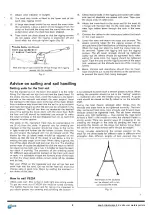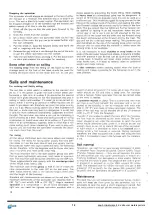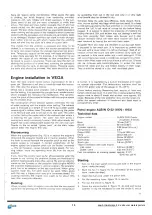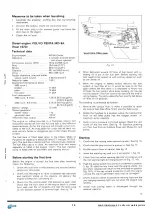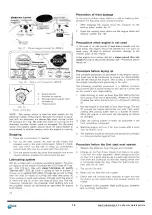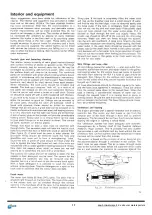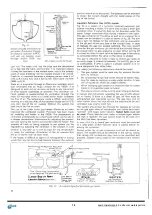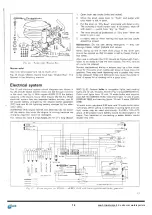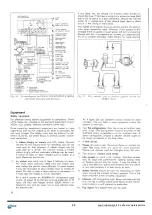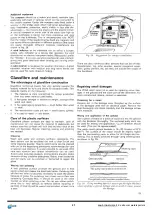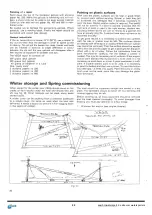
Finishing of a repair
Sand down the top of the hardened gelcoat with abrasive
paper No. 220. While the gelcoat is hardening and still rub-
bery, a sharp knife can be used to cut away excess material.
Continue with wet and dry paper No. 400 and 600 in men-
tioned order.
Be careful not to damage the surrounding gelcoat. Where
possible, use a sanding block. Finally the repair should be
burnished and waxed (see above).
General instructions
If the air temperature is below 15°C (60°F), use a heater to
dry out and then heat the damage in order to speed up the
hardening. Do not put the heater too close. Hands and tools
can be cleaned in acetone. A slight difference in colour
between the old and the new gelcoat will disappear after a
few months of exposure to weather and sun.
The VEGA repair kit consists of:
200 grams deck gelcoat
200 grams huil gelcoat
40 grams of hardener in a tube
One "putty stick"
2 abrasive papers no 220
2 abrasive papers no 400
2 abrasive papers no 600
Painting on plastic surfaces
With care the plastic surfaces can be kept in good shape
for several years without painting. Sooner or later they get
so scratched and damaged that it becomes necessary to
paint the boat. Maybe another colour is required. The quality
will not be lowered if a boat is painted, provided that the
right kind of paint is used in the right manner. Modern two-
pot polyurethane paints are just as strong as a gelcoat and
have an equally long life. A painted boat does not have to be
repainted annually.
To get good results it is necessary to prepare the surfaces
well. No wax or grease must be left. The surfaces should
be cleaned with white spirit or a polyurethane thinner, (silicon
wax cannot be removed). Then the surface should be sanded
with a fine wet and dry paper to get a good grip for the paint.
Wash with a lot of water. Follow the instructions from the
paint manufacturer carefully. For the bottom a primer is
needed. This may be necessary on all surfaces. If the original
bottom paint (Geveco Racing Special) is to be used, it is not
necessary to sand down or prime. A good washdown is suffi-
ciënt. If another bottom paint is to be used, it is necessary
to sand the bottom and then use a primer. To paint the bottom
you need app. 1.5 litres (1
1
/
2
quart). Paint removers or a blow
torch must not be used, since they may damage the glass-
fibre lamination.
Winter storage and Spring commissioning
When stored for the winter your VEGA should stand on her
cradie or have blocks under the keel and shores fore and
aft, see fig. 30. Other methods can be used; study boats
stored locally.
A winter cover can be anything from a complete boathouse
to a simple cover, the same as used when the boat was
delivered. It needs a support to prevent it from sagging down
in the centre of cockpit.
The mast should be supported straight and stored in a dry
place. The spreaders should be taken off, but standing and
running rigging may be left.
Before covering up, all loose equipment should be removed
and the boat cleaned thoroughly. To avoid damages from
freezing you must pay attention to a few things:
1. Winterize the engine (see engine chapter).
Vh6A
LT-I0H7
Fig. 30
20
22


